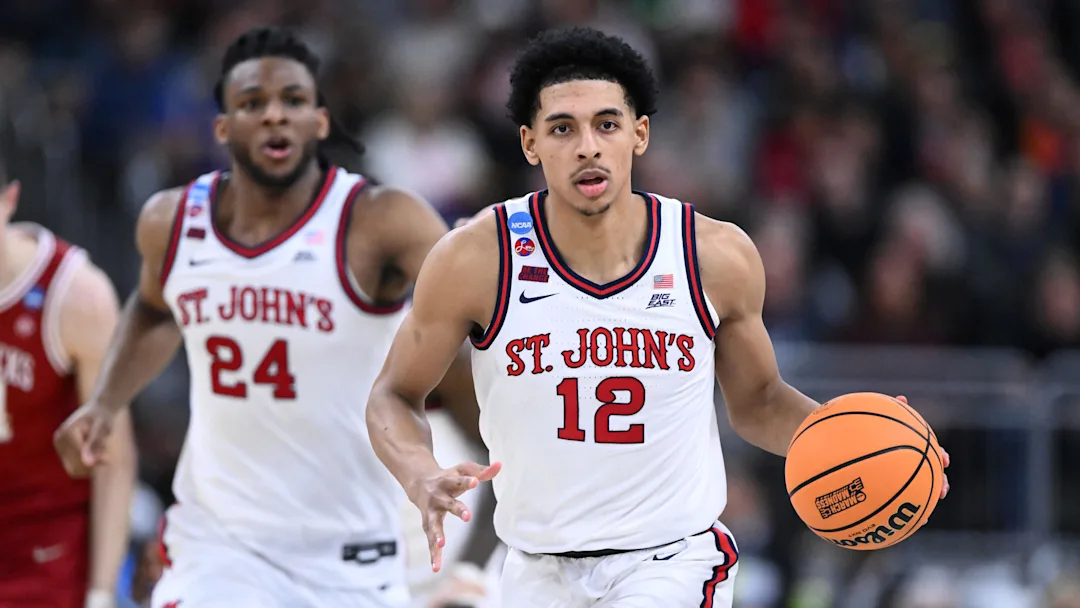Duke basketball entered the 2025 offseason with a jarring sense of transition. The departures of Cooper Flagg and Kon Knueppel, two cornerstones of the Blue Devils’ 2024-25 campaign, have left considerable voids in both production and leadership. Flagg, the No. 1 recruit in the nation, lived up to every ounce of the hype during his one-and-done year, providing elite shot-blocking, rebounding, and clutch scoring. His versatility on both ends of the court made him the centerpiece of Duke’s system. Knueppel, meanwhile, offered veteran poise and one of the most consistent three-point strokes in college basketball, often spacing the floor and quietly leading with his smart, unselfish play. With both headed to the NBA, head coach Jon Scheyer is facing one of his most important offseasons yet.
While Duke returns some talent and brings in another top-tier recruiting class, the expectations in Durham don’t allow for transitional years or soft rebuilds. Competing for a national title is not just the goal—it’s the standard. To do that in the post-Flagg-Knueppel era, Duke is looking to the transfer portal to fill key gaps, both in experience and impact. As the portal becomes an increasingly vital tool for top-tier programs, Scheyer and his staff are reportedly targeting three players who could make an immediate difference next season: Utah State wing Great Osobor, Belmont’s dynamic guard Ja’Kobi Gillespie, and Michigan State forward Jaxon Kohler. Each brings something unique to the table, and together they could help reorient Duke back toward Final Four contention.
Great Osobor is one of the most coveted names in the portal this spring—and for good reason. The 6-foot-8 forward was a dominant force at Utah State last season, averaging 17.7 points and 9 rebounds per game en route to earning Mountain West Player of the Year honors. Originally from the U.K., Osobor has steadily developed into one of the most versatile big men in the country. He combines physicality with finesse, and his ability to create offense from the post, midrange, or off the dribble makes him a matchup nightmare. Defensively, he’s stout in the paint and agile enough to guard smaller wings on switches. With Flagg gone, Duke is in desperate need of a defensive anchor and a frontcourt scoring option—roles Osobor could slide into seamlessly.
What makes Osobor especially appealing to Duke is his maturity. With four years of college experience, including a breakout junior season under Danny Sprinkle, he has a veteran edge that the Blue Devils have lacked in recent years. As Scheyer builds a program that balances elite freshmen with savvy older players, someone like Osobor can help stabilize the locker room while also mentoring younger forwards like incoming freshman Khaman Maluach. Given Duke’s history of success with positionless forwards—think Justise Winslow, Brandon Ingram, and Zion Williamson—Osobor fits the mold of a Swiss Army knife talent who can contribute in multiple ways. If Duke can win the recruiting battle over programs like Texas Tech and Louisville, Osobor could become a foundational piece of next year’s team.
In the backcourt, Ja’Kobi Gillespie has emerged as a top target to bring scoring punch and ball-handling stability. The 6-foot-1 guard out of Belmont had a standout sophomore season, putting up 17.2 points per game while shooting 40 percent from beyond the arc. A high-IQ player with excellent court vision, Gillespie offers a rare combination of scoring efficiency and playmaking creativity. He doesn’t turn the ball over often, and his pace and control make him well-suited for a high-tempo offense. For Duke, which often struggled last season with inconsistent guard play outside of Jeremy Roach, Gillespie could be the steady hand the Blue Devils need.
Beyond the numbers, what makes Gillespie intriguing is his ability to lead an offense. He excels in pick-and-roll situations, knows how to manipulate defenses with hesitation moves and sharp reads, and is fearless in crunch time. While he may not have the elite athleticism of a typical ACC guard, his shiftiness and quick release make him difficult to contain. And on the defensive end, he competes with intensity, often punching above his weight class in effort and anticipation. Duke has always valued guards who can control the pace and keep turnovers low—traits that defined past champions under Coach K. Gillespie fits that profile, and his potential pairing with rising sophomore Caleb Foster could give Duke one of the more underrated backcourt duos in the country.
Another potential gem for Duke is Jaxon Kohler, the former Michigan State forward who entered the portal seeking a bigger role. At 6-foot-9 and 250 pounds, Kohler is a traditional low-post big with soft hands, great footwork, and a polished offensive game. Though he struggled with injuries during his sophomore year, Kohler showed flashes of his potential when healthy. He averaged 9 points and 5 rebounds in limited minutes but made a clear impact with his rebounding and post scoring. For a Duke team that will likely need help on the boards and a reliable scoring option inside, Kohler could be the answer.
Kohler’s fit in Durham is especially intriguing when you consider the kind of frontcourt flexibility he offers. With Maluach potentially needing time to adjust to the college game, and Christian Reeves still unproven, Kohler could provide an immediate presence at the five. He’s not an above-the-rim athlete, but his fundamentals make him a matchup problem for smaller or more athletic bigs. He knows how to carve out space, use angles, and finish through contact—qualities that often get overlooked in the highlight-heavy world of recruiting. Additionally, his passing out of the post adds a layer of offense that could benefit Duke’s shooters, opening up perimeter looks through inside-out action.
What ties these three transfer targets together—Osobor, Gillespie, and Kohler—is not just their individual production, but their complementarity. Duke isn’t just looking for talent; they’re looking for cohesion. With Flagg’s departure, they lose a do-it-all defensive anchor and late-game scorer. With Knueppel gone, they’re missing a reliable wing shooter who could also facilitate in the halfcourt. The trio of Osobor, Gillespie, and Kohler each fill specific gaps, but also bring leadership and experience that can’t be taught in practice. For a program that’s often leaned heavily on freshmen, these kinds of players bring balance and perspective—a blend of hunger and experience.
In the NIL era, assembling a championship roster has become as much about roster management as it is about Xs and Os. Scheyer and his staff have shown an ability to navigate this new terrain with strategic precision. Last year’s portal additions were minimal, but this offseason demands aggression. With a wide-open ACC next season and the talent spread more evenly across the country than ever before, Duke has a window of opportunity to reload quickly and decisively. Bringing in three high-level transfers could be the key to not just remaining competitive—but returning to the top of the college basketball hierarchy.
While it’s too early to know where these players will land, there’s no doubt that Duke is swinging big. The appeal of playing at Cameron Indoor, competing for a national title, and being on one of the biggest stages in college basketball remains strong. Osobor, Gillespie, and Kohler would each thrive in that environment, and perhaps more importantly, they would help the Blue Devils thrive as well. As Jon Scheyer shapes the next iteration of his program, blending one-and-done stars with proven veterans may be the formula that finally gets Duke back to the mountaintop.



